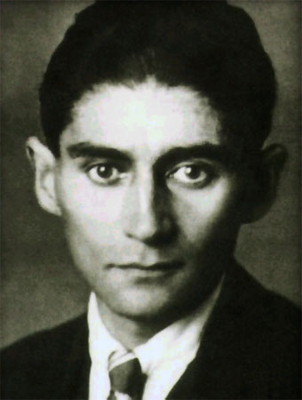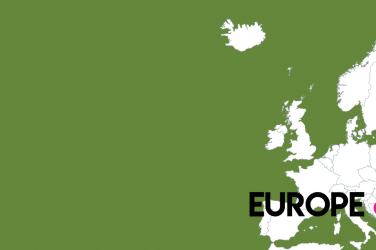Reading is always good for you, right? Apparently not. Throughout the years, masterpieces have been banned in different places in Europe. Find out why here.
“A good book is like a journey”, somone once said. Well, if that’s true, then some destinations have been awfully hard to reach over the course of history. For many different reasons, governments across Europe have banned books that today are considered an important part of our cultural heritage. It might have been because they were afraid of what the books could inspire people to do, it might have been because they didn’t agree with what was in the books, or it might have been because they were scared that people actually gain knowledge from books. Read on to discover what books were banned where – you might be surprised to find your favourite book on the list!
# 5: Brave new world

fate.Written in 1931 by Aldous Huxley, Brave New World paints a dark and frightening picture of the future. The World State controls everything. Children are not conceived naturally but bred in hatching farms, and people are no longer (if they ever were…?) in charge of their own fate.
Aldous Huxley said himself that he wrote the book as a satirical response to the optimistic utopias written by the likes of H. G. Wells. Thus, the book was never meant to be taken literally. However, you can’t always count on people picking up on stuff like that, let alone governments. Soon after its publication, Ireland banned the book for being “anti-family” and “anti-religion” – entirely missing the fact that this dystopia of a sci-fi-drama was meant to be a critique of the society it depicted, not a celebration of it.
# 4: An addition from across the pond: Where’s wally?
The series of books urging children to find Wally are popular throughout the world, and many of us remember the agonising frustration, then relief and sense of achievement when we had to scan the pages meticulously and finally discovered the hiding place of the friendly, sweater-wearing man. Who would be against that, you might think? Americans, that’s who. Wally, created by British illustrator Martin Handford, is called Waldo in the US and is just as well-loved there as he is here in Europe. But in one book, Wally’s adventures took a turn for the scandalous. In a spread where Wally is hiding on the beach, one woman (out of the hundreds of portraits on the pages) is sunbathing topless. This proved too much for the state of New York, who banned the book from schools and public libraries numerous times during the 90’s. The official reason for banning the book was that it contained “dirty things”. Perhaps people were afraid that the popularity of the books didn’t come from the joy of finding Wally but rather from looking at naked ladies (who are, as far as I know, otherwise completely inaccessible in the country with the largest porn industry in the world)…
# 3: Lolita
Vladimir Nabokov had already written numerous books and essays when he finished Lolita in 1953, having worked on it for five years. Nabokov, who was Russian but lived in USA by the time he wrote Lolita, tried to pitch the novel to five different American publishing houses, but no one seemed interested in publishing a story about a self-loathing, unreliable literature professor who fell in love with a 12-year old girl. Being a literature professor himself, Nabokov didn’t give up on his story and kept on going. The book wasn’t published until 1955 when it accidentally landed on the table of a small publishing house in Paris known for publishing pornography of very questionable quality. In fact, the book wasn’t published in the USA until 1958 where it became an instant bestseller. So, when was it banned, then? In France, the country where it had been published in the first place. The ban was initiated by the Minister of the Interior and lasted two years.
# 2: The works of Kafka
There is no doubt about it: Franz Kafka remains one of the greatest writers of all time. His works have influenced many other writers, yet no one can convey that essentially Kafkaesque way of describing an experience so that it creeps under your skin quite like the man himself.

Who would want to ban the works of such a brilliant artist? Perhaps a government which felt that his visions came a bit too close to its own regime. After the cultural uprising of the Prague Spring in 1968, Kafka’s works were banned among many other works of art. With his books no longer read and his name almost unmentionable, Kafka could have fallen into history’s oblivion. But in the Western world his nightmarish stories were still widely read, having been translated before the ban. With glasnost sweeping across the Eastern bloc in the late 80’s, his works were released again in Czechoslovakia in 1989. The re-publication of his works, along with letters and drawings, could have been seen as a great victory for the freedom of artists, but it was not entirely so. At the time of Kafka’s re-publication, more than 150 Czechoslovakian writers and artists were still imprisoned, among them playwright Vaclav Havel, who had been sentenced to seven months in prison for anti-governmental activities. But things were about to change: at the end of 1989, Havel was the president of Czechoslovakia.
# 1: The Bible

Didn’t see that one coming, huh? In the Middle Ages, the Catholic church upheld much of its power because the large majority of the European population were illiterate and therefore had to trust what the priests and scholars told them were the right ways to practise their faith. For those Europeans who could read, the Bible was not accessible because it was not available in their respective languages: the Old Testament was primarily in Hebrew while the New Testament was in Greek; not the common languages spoken in Europe. In the Middle Ages, the Bible was translated into Latin – however, this did not make the writings any more accesible to the common European population.
But early pioneers like John Wycliffe had set their minds on changing the Catholic church’s dominance on Bible interpretation. He completed his first English translation of the Bible in 1382, writing out each copy of the book by hand (one Bible has survived up to the present day and can be seen in Oxford). Wycliffe’s translation made the Oxford Council declare that it was outright dangerous to translate scriptures because there was no way of knowing if the translations were correct. Wycliffe didn’t get his punishment for his wrong-doing while he was alive, though: 40 years after his death, the church dug up his bones and burned them.
The invention of the printing press with moveable type made the Church’s resistance to printed copies of the Bible all the more difficult to uphold, and therefore their methods of preventing the public from reading them became harsher. In 1559, Pope Pius IV issued a declaration saying that “Books of arch-heretics – those who after 1515 have invented or incited heresy or who have been or still are heads and leaders of heretics, such as Luther, Zwingli, Calvin, Hubmaier, Schwenckfeld, and the like – whatever their name, title or argumentation – are prohibited without exception”. The punishment for owning, reading, and redistributing such heretic books (which, let’s remind ourselves, did in fact include Holy Scriptures)? Death by burning. Now, that may seem a bit excessive, but the Catholic church were right to be worried: translated versions of the Bible became a powerful weapon for the Protestants during and after the Reformation.
Thumbnail photo: Wikimedia





